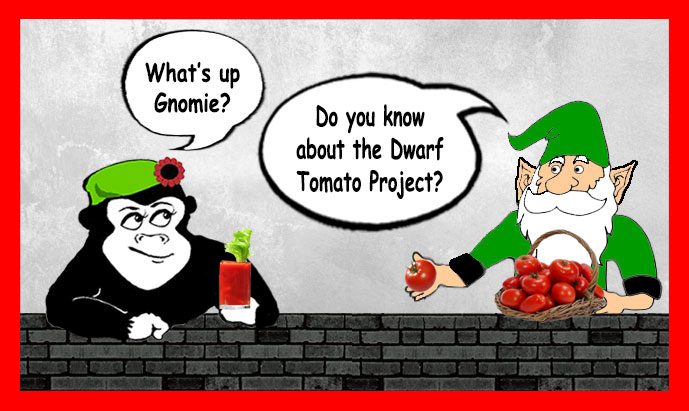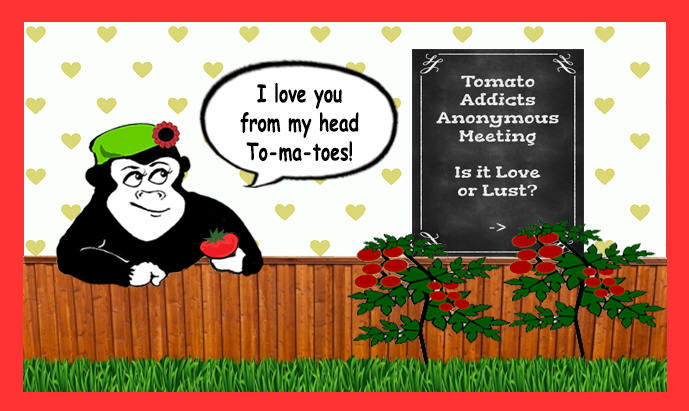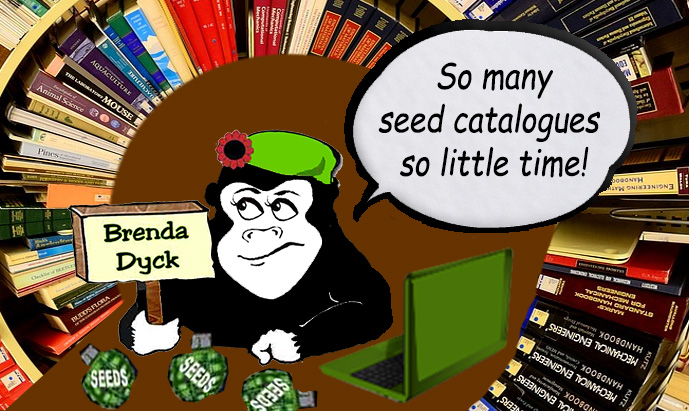Tomato Seed Choices – The 5 things you should Consider before Selecting Tomato Varieties!
Tomato Seed Choices!
The seed catalogues are in abundance and there are literally hundreds of tomato seed choices. This extensive selection of tomato seed choices is both exciting and a little overwhelming. With so many tomato varieties, so many tomato seed choices and so little planting space, how do you decide?
I mean, even if you are able to meet a tomato plant’s environmental and nutritional requirements (after all tomatoes can be a little needy), you will need to get control. You simply cannot order one of each variety of tomato. Nobody has space for that!
This is certainly true for townhouse dwellers with non-gardening spouses who are trying to make good tomato seed choices. Apparently 10 packets of tomato seeds are still too many tomatoes when there is no place to plant them.
So tomato seed choices must be made!
Here are the The 5 things you should Consider before Selecting Tomato Varieties:
1-Choose your Tomato Purpose:
Everybody’s Tomato Expectations are based on a Tomato Purpose.
Think about how you are planning to use your tomatoes. There is no point in growing salad tomatoes if you want canning tomatoes.
Some Tomato Purpose examples are:
Salads/Eating Tomatoes:
Cherry, grape and current tomatoes are always a good choice. They make a great snack when you are working in the garden and they are perfectly sized for salads. Best of all your salad won’t get soggy in your work lunch box no matter how many you add.
Paste/Sauce Tomatoes:
Paste/Sauce tomatoes have fewer seeds and are “meatier” than a regular tomato. Roma Tomatoes (a.k.a. Italian tomatoes or Italian plum tomatoes) are a well-known paste tomato. San Marzano, Costoluto Genovese and Principe Borghese also make a good tomato seed choice if you want to grow paste/sauce tomatoes. Although these type of tomatoes are best known for making tomato sauces and pastes, most paste varieties can be equally enjoyed in salads or sandwiches as well.
Slicing Tomatoes:
Large beefsteak tomato varieties are a popular tomato seed choice for slicing. It’s been said that nothing beats a beefsteak tomato sandwich for flavor. However, they are not the only slicing tomatoes available. Brandywine, Mortgage lifter and Celebrity Tomatoes all have their own Tomato Sandwich Fans as well.
Canning Tomatoes:
Tomatoes for canning usually have a determinate growth pattern which means that they will bear tomatoes all at once. While juicy, acidic varieties are great for eating fresh, when it comes to growing tomatoes for canning, it is best to select the meatier tomato varieties such as Brandywine, Roma, and Amish Paste.
2-Tomato Growing Season Length:
The days to harvest should be listed somewhere in the tomato seed description. Alternatively it might indicate that it is either an early, late or mid-season tomato. Basically this indicates the approximate number of days needed from transplanting for the first ripe tomato.
Early season tomatoes 50-65 days
Mid-season tomatoes 66-75 days
Late season 100-125 days
Best case scenario (if possible) is to plant tomatoes varieties with various maturity dates so you can enjoy fresh tomatoes throughout the season. However, check with your local garden center to confirm the number of days in your growing season. In Northern climates you may only be able to plant early season tomato varieties in order to produce tomatoes in a shorter growing season.
3-Tomato Growth Patterns:
How much room do you have? Will you grow tomatoes in a garden plot or containers? Do your research to determine which tomato varieties will fit best in your garden space. Every tomato falls in one of these 4 growth patterns:
Indeterminate Tomatoes (“Vining” or “Cordon” tomatoes)
These tomato “vines” will continue growing until first frost and provide a steady stream of ripe tomatoes throughout the growing season. Indeterminate tomatoes plants need pinching and are not usually recommended for containers as they can get monstrously large. You would need a minimum size of a 20-25 gallon container to do it justice. Strong trellising or caging is also recommended as a regular tomato cage doesn’t typically stand a chance.
Determinate Tomatoes (“Bush” tomatoes)
Determinate tomato plants are bred to grow 3′-5′ feet tall and their tomatoes ripen all at once (usually over a 2 week period)and then die. These types of tomato plants are preferred by commercial growers who wish to harvest a whole field at once, or by home growers who think they can grow enough to do some canning. Due to their limited growth pattern determinate tomatoes also make a good container tomato choice for townhouse/condo dwellers. A minimum size of 5-6 gallon container will be needed. Determinate tomatoes may require a limited amount of caging (or staking) for support and should never be pinched or pruned.
Semi-determinate Tomatoes
Semi-determinate tomatoes provide the best of both worlds – easy to manage like determinate varieties, does well in containers (minimum size of 5-6 gallon container) and produces all season long like indeterminate varieties.

Dwarf Tomatoes
The Dwarf Tomato Project started out in 2005 as an all-volunteer world-wide tomato breeding project. Not a botanist or horticulturist in sight, just some avid gardeners with a keen interest in learning about tomato genetics and discovering new tomato varieties. Smaller micro varieties, like the “Tiny Tim” and “Micro Tom” can easily be grown in as little as 4- to 6-inch pots. These micro varieties are the best choices for window sill gardening and have great potential in The Fairy Garden. Some of the larger dwarf tomato varieties, like the “Patio F Hybrid,” still may require a 5 gallon container.
4-Heirloom or Hybrid Tomatoes?
Should you grow heirloom or hybrid tomatoes? There are as many opinions on this subject as there are tomato seed choices. Some people prefer the pulpier texture associated with heirloom tomatoes, while others seek the firmer texture more commonly associated with greenhouse and determinate tomatoes. I grow both hybrids and heirlooms but I suggest you look for what you want out of your tomatoes and select accordingly. I promise you that the Tomato Police will not come to your door if you favor one over the other.
Heirloom Tomatoes
Heirloom tomatoes are reputed to be the most flavorful of all tomatoes. The tomatoes are usually irregular in shape and compared to supermarket tomatoes seem almost ugly. Choose heirloom tomato seed varieties if you want to save tomato seeds from one year to the next. The heirloom tomato seeds you save will grow up to be exactly like the parent tomato plant.
One drawback to harvesting heirloom tomatoes is that they tend to bruise easily and can’t be stored fresh for long periods of time. This may explain why some Grandmas (not mentioning names) switched to growing hybrid tomatoes.
Hybrid Tomatoes
Hybrid tomatoes are created when plant breeders intentionally cross-pollinate two different varieties of tomatoes to produce offspring that contains the best traits of each of the parent plants. The process of developing a hybrid tomato typically requires many years. This fact tends to make hybrid tomato seeds a little more expensive than most heirloom tomato seeds. Not only that but you will have to buy fresh seed every year because most seed from hybrids turn out to be sterile and won’t grow. Even if they do sprout they usually don’t look anything like the parent tomato plant. So why bother growing them? Well as Grandma discovered hybrid tomato varieties often have prettier tomatoes, offer a longer shelf life, higher yields or better disease resistance.
5- Tomato Disease Resistance Codes:
When it comes to disease resistance making the right tomato seed choice can make a difference. Tomatoes can be vulnerable to a number of diseases that can reduce your tomato harvest to nothing. Tomato plant tags, seed packets and catalog information sometimes includes random letters inserted into the tomato plant’s description. Turns out these letters are actually Tomato Disease Resistance Codes. The letters indicate which disease that particular variety of tomato may be resistant to. For instance if the tomato description has the letters LB in the description it means it’s resistant to Late Blight. This does not mean that tomatoes with this code will never get blight, it just means they are not as susceptible to late blight as some of the other tomato seed choices that are out there.
How do you use Tomato Disease Resistance Codes?
Start off by finding out what tomato diseases are common in your area.
Then use a few of the Tomato Disease Resistance Codes to help you narrow down your own tomato seed choices:
V = Indicates the tomato plant is resistant to the fungi that causes Verticillium Wilt. The fungi spreads a toxin that wilts leaves and prevents water from reaching branches and leaves, starving the plant. Infection pattern often resembles a V-shape.
F, FF, or FFF = Specifies that the tomato plant is resistant to the fungi that causes Fusarium Wilt. Left unchecked, Fusarium Wilt can kill tomato plants well before harvest time. Some Fusarium fungi have even mutated into a strain of super fungi. This has resulted in some tomato gardeners using additional F words. The “FF” and “FFF” designations are for newer tomato cultivars that have been bred to be resistant to these super strains.
N = This means the plant is resistant to nematodes. These are parasitic round worms that often lie dormant in the soil. The infected tomato plants look weak, wilted, stunted, and do not respond to fertilizer.
EB (Early Blight) = The fungus Alternaria Solani or Alternaria Tomatophila causes Early Blight. It starts off with dark spots on leaves and eventually results in browning of stems and fruits. If left untreated it usually ends up killing the entire plant.
LB (Late Blight) = Late Blight generally appears later in summer while fruits are ripening. It causes gray spots on leaves and wet, dark mushy spots on tomatoes, making the tomatoes inedible. Like Early Blight, Late Blight can also cause an entire plant to die.
A (Stem Canker/Alternaria) = This fungus that causes brown or black cankers on tomato stems, leaves, and fruit. Left unchecked, cankers can spread across the entire tomato plant and kill it before harvest.
T = Indicates that the tomato plant is resistant to the Tobacco Mosaic Virus (TMV) which causes mottling and yellowing in tomato leaves, reduced tomato size and yield, and brown, icky fruit.
ST (Stemphylium Solani Fungus) = This specifies that the tomato plant is resistant to gray leaf spot. Affected plants develop brown to black spots, which progressively get bigger, turn gray, and drop out.
TSWV = A tomato resistant to Tomato Spotted Wilt Virus. Symptoms vary from plant to plant, but can include yellow and brown rings on stems, brown streaks on stems, dead leaf spots/tips, and severely stunted growth. Tomatoes usually will be discolored when mature.

Random Tomato Tips:
- Yellow and orange tomatoes tend to be less acidic and milder-tasting than red and pink tomatoes.
- If you are planting tomatoes in containers DO NOT USE TOP SOIL! Tomatoes need POTTING SOIL that is specifically made for planters and containers.
- The containers you choose for growing tomatoes should be rated food grade. Some ceramic glazes may have lead in them and some plastics can leach harmful compounds into the food you are trying to grow.
- Avoid purchasing potting mixes with added fertilizers or moisture-retaining additives unless the label clearly states they are food grade and OK to grow food in. After all growing vegetables is only healthy if you don’t poison yourself and your family.
- All blight will over winter in the soil and infect next year’s tomato plants. Treatment for tomato blight does not always work and sometimes it is better to rip it up and escort it to the trash bin. Do not add to composter!
- Some tomato varieties flourish in a hot, humid climate while others produce well in colder areas. Being aware of your growing conditions can help you to select varieties that will better cooperate with the environment you wish place them in. Example- I suspect that some tomatoes are called Hothouse tomatoes for a reason.



Pingback: An Unauthorized Grape Tomato Caper! - Guerrilla Garden Adventures